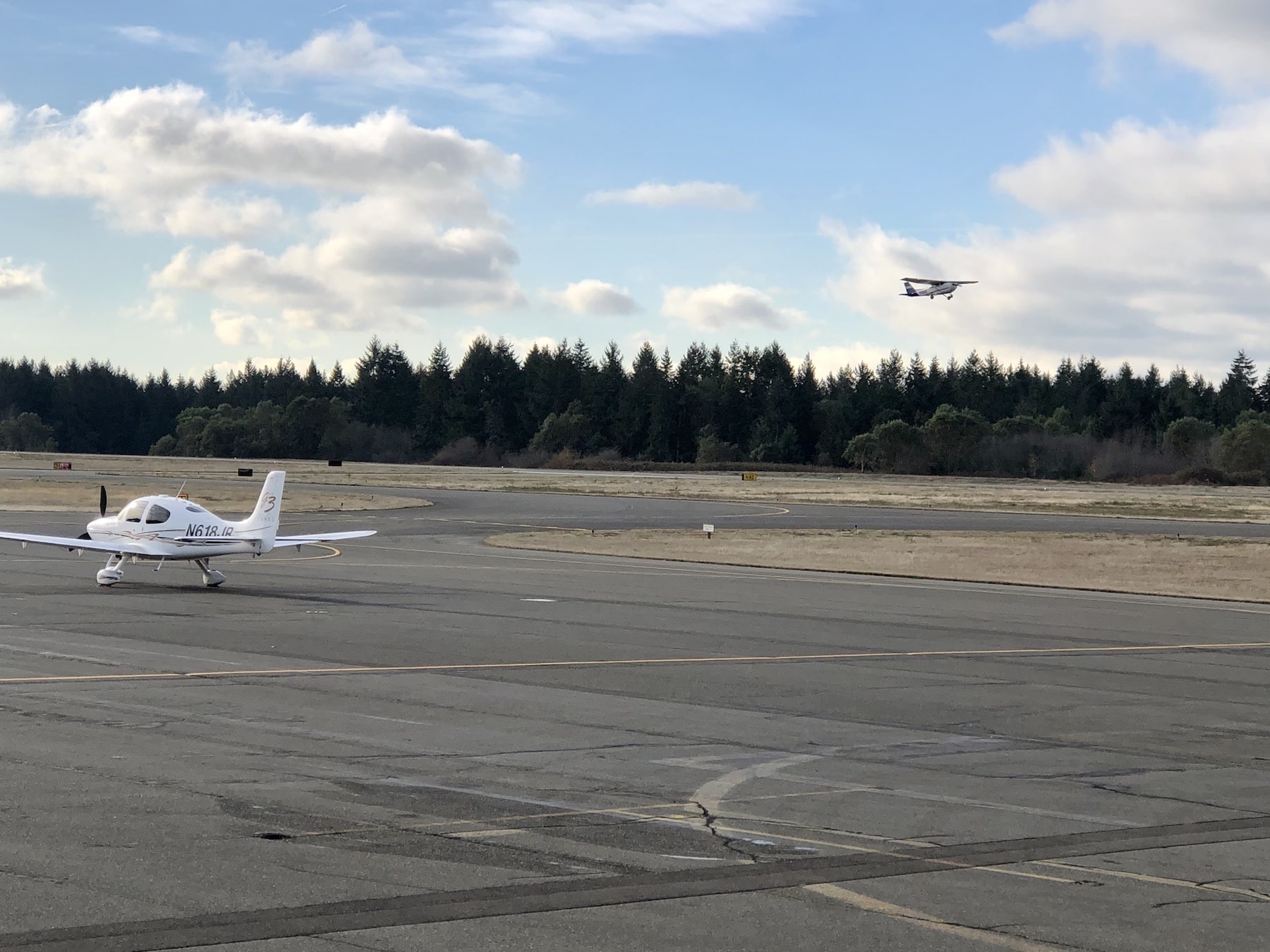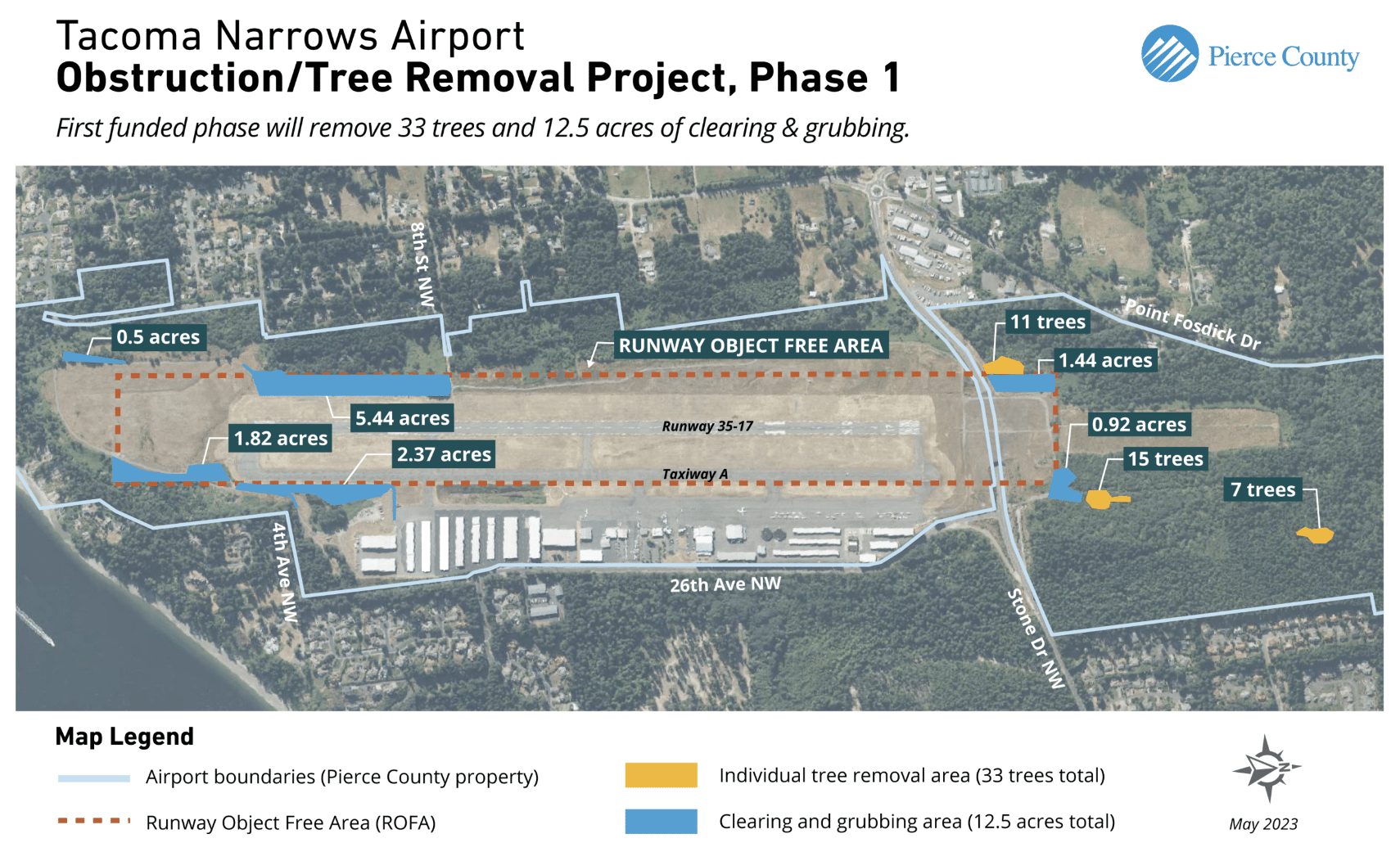Community Environment Transportation
Plan to clear trees at Tacoma Narrows Airport delayed
The first phase of Pierce County’s plans to improve safety at Tacoma Narrows Airport is delayed, the county announced last month.
The cost to remove trees and erect fencing around the airport exceeded a Federal Aviation Administration grant for that purpose. The county still plans to go forward with the project, which the FAA requires for safety purposes, but won’t have a revised timeline until next spring.

Most trees to be removed are to the west (in background) and north of the runway.
Scaled-back plan
The county expected to begin work this fall on removing 33 trees and clearing 12½ acres that the FAA deemed posed the greatest danger to airplanes in the airport’s flight path.
The county called that Phase 1 of the obstruction-removal project at the airport. Phase 1 also includes installing about 7,000 feet of security fencing to keep wildlife clear of planes taking off and landing.
Tackling only Phase 1 initially was a step back from the original plan, which was based on a 2019 survey of trees near the airport. According to the survey, 51.7 acres of the 568-acre airport must be cleared and more than 2,000 trees selectively logged to eliminate hazards to navigation.
The county couldn’t put together enough money to tackle the whole project at once, so it broke it up into phases. As it turns out, the county doesn’t have enough money for Phase 1, either.

Grant didn’t cover expenses
The FAA awarded Pierce County a $1.28 million grant to help with Phase 1. The sole bid for the project came in at $1.9 million, according to Pierce County Planning & Public Works spokeswoman Akiko Oda.
Pierce County gets to keep the grant and can use the money whenever Phase 1 begins. The county expects to put the project out to bid again next year, Oda said.
The work likely won’t begin until next fall.
The project’s environmental assessment requires that the tree-removal project be done outside of the nesting period of a bird called the streaked horned lark. That means the county cannot cut down trees around the airport between March 15 and Sept. 1.
Future phases would tackle the other 1,900 trees and nearly 40 acres the survey determined to be hazardous. Those phases would be years in the future, officials said earlier this year.

